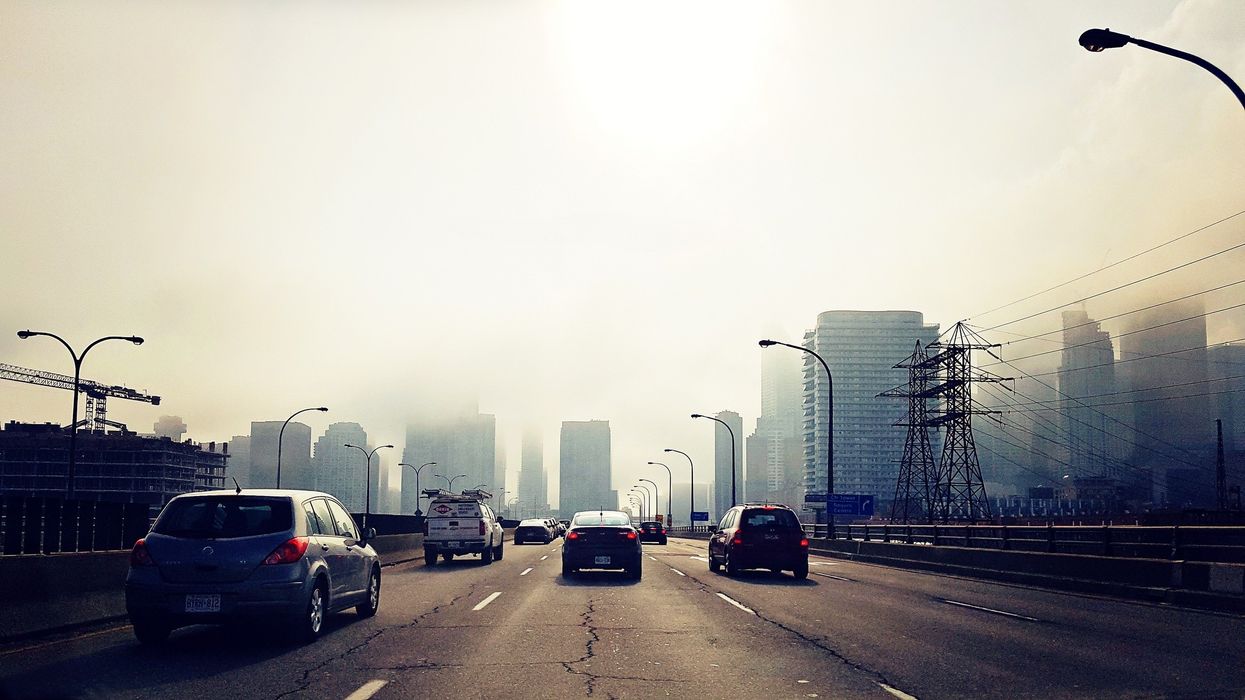What the tar sands are to Alberta, sprawl is to Ontario. So spoke this province’s third and last environmental commissioner, Diane Saxe, in her presentation to the Ontario Professional Planners Institute earlier this month.
“Contrary to popular belief,” she told OPPI delegates, “more of Ontario’s climate pollution (greenhouse gases) comes from individuals than from heavy industry. And the largest source of that pollution is petroleum fuels used for transportation, like gasoline and diesel. These fuels are Ontario’s largest energy sources and the primary sources of its climate and air pollution.”
“Ontarians drive so much,” Saxe explained, “creating congestion and air and climate pollution, because urban sprawl has spread out the places we need to go. Most Ontarians live inconveniently far from jobs, grocery stores, libraries and schools because government decisions about land use and transportation have given them no real alternative. That locks people into huge carbon footprints, including car-based communities that are ever longer and more congested. On top of that, Canadians drive the most climate-polluting vehicles of any country in the world, because we drive so many trucks and SUVs."
READ: Bold Transit Expansion Boosts Mississauga’s Urbanization
In other words, the province’s growing environmental crisis is largely caused by discredited suburban planning policies that allow – no, encourage – sprawl. Low-density single-use zoning has led to the construction of countless communities that except for the automobile would be uninhabitable. This process of “multiplication by subdivision” has left vast swaths of Ontario’s most fertile agricultural land unproductive and even toxic.
And, as Saxe noted, government’s role as enabler cannot be underestimated. Planners have participated enthusiastically in the destruction of the landscape, as have politicians, local and provincial. In Toronto, for example, where the municipal budget was approved in mid-February, council put aside fully 44 percent of city’s transportation capital budget for the next decade to enlarge the east end of the Gardiner Expressway, which city staff recommended tearing down. The next largest expense – 40 percent – will go to other roads and highways. The Vision Zero pedestrian safety initiative and bike lane expansion each get 3 percent.
Ironically, while Toronto recklessly suburbanizes, suburban communities, or at least a few of them, are intent on urbanizing. Mississauga is most obvious example, but let’s not forget Markham. Both have a long way to go to realize their downtown ambitions, but the potential for suburban transformation is huge. Even in unrepentantly car-dependant communities such as Milton, Oshawa and Brampton, there’s room to remake these dispersed landscapes into something more diverse and human scaled.

The resistance comes from various sources, including residents, many of whom belong to self-selected communities uninterested in any consideration beyond the individual. There is little sense of a public realm – community centres, concert halls, even sidewalks. In suburbia, a street is a way to get from A to B, not a destination in its own right. These streets are designed for cars and trucks, not people. Besides, the distances between things are too great for walkers.
For families that can’t afford a car – or two or three – suburbia can be a barren and hellish landscape of isolation. Since poverty arrived in Toronto’s inner-suburbs several decades ago, simple tasks such as buying groceries can be an ordeal.
The best single way to get people out of their cars is public transit. To be economically viable, however, transit needs increased densities, more people living in less space. This radical reordering would include measures that strike at the very heart of the suburban ethos. We’re talking about basement apartments, rooming houses, high-rise development, lower minimum parking requirements, narrower roads, wider sidewalks, dedicated transit lanes, paid parking and so on.
The main reason people choose suburbia is money; simply put, it’s cheaper. But as research by the Pembina Institute has found: the cheaper the housing, the more expensive the transportation. That’s a function of both distances travelled and car dependency.
In an analysis of the National Association of Realtors’ Community Preference Survey done in 2011, urban researcher Richard Florida argued: “the choice isn’t between urban and suburban but between neighbourhood and subdivision. A great neighbourhood is a great neighbourhood whether it’s in the city or the suburbs. It’s not an either/or, between crowded apartments or Cape Cods on cul de sacs, it’s more of a blend.”
READ: The Importance of Making “Union Station West” a Reality at Pearson Airport
Indeed, as a recent report by the CMHC discovered, new-urbanist projects such as Cornell and New Woodbine in Markham come closer to being a “great neighbourhood” than conventional post-war suburban developments. According to the survey: 60 percent of residents of new-urbanist neighbourhoods were “very satisfied” with the “physical design of the streets, landscaping and facades” as opposed to only 34 percent in traditional suburban neighbourhoods. Even more striking, 85 percent of new-urbanist neighbourhood dwellers felt their streets were “very pleasant for walking” versus 44 percent in sprawl areas.
These figures tell a compelling story. Building “great neighbourhoods” may be a lost art; it’s still one we can recover. Nothing less than our future depends on it.





















